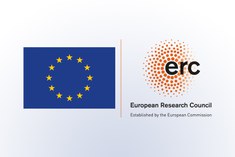Copying as Common Practice in Early Modern Architecture (CCPEMA)
The history and theory of early modern architecture is replete with discussions of artistic genius and inimitable creation. This is reflected in the predominant focus given to disegno – a term that refers to both the practice and product of drawing – and more specifically to autograph drawings. In the second half of sixteenth century, a coherent theory of disegno was developed by Giorgio Vasari, in which artistic design was understood as an intellectual endeavour and was categorically distinguished from processes of execution. This theoretical apparatus extended to the foundation of the first artistic academies, institutions in which the activities of artist-architect were programmatically distinguished from those of the technician-engineer, thus paving the way for disciplinary distinctions formally implemented in the eighteenth century.
This ERC-funded research project challenges the Vasarian concept of disegno as a framework for understanding architectural drawings and the practices of early modern architecture. Looking to models of epistemology developed in the history of science, the project advances the hypothesis that techniques of mechanical drawing, and more specifically, drawings that were produced by manual copying and direct tracing, served as a bedrock of architectural education in the period prior to the advent of formal schools of architecture. This proposition confronts history’s normative conceptions of “architecture” and artistic “drawing.” Within the standard histories of fifteenth and sixteenth century architecture, drawings of mechanical subject matter are categorically distinguished from those of ornamental or more “artistic” subjects. Concurrently, drawings that are demonstratively autograph or individual are celebrated as the embodiment of their creator’s singular genius. Copy-drawings, in turn, and those that employ the practice of lucidare or tracing on oiled, transparent paper (carta lucida), have long been considered corrupt or fraudulent. As early as the sixteenth century, theorists explicitly ridiculed copying practices, and particularly mechanical copying, as unbefitting the proper artist and detrimental to the essential practice of disegno. Tracing techniques were thought to provide low-skilled artisans and amateurs with an entrée into artistic practice, and in doing so subjugated art to their pedestrian skill.
The censure of copying and exaltation of disegno – from sixteenth century art theory to the present day – has cemented the idealization of early modern Italy’s “great” architects. Equally critical, the dismissal of a substantial volume of “practical” architectural drawings – drawings of mechanical subjects and pattern-book-type traces of canonical models – has impoverished our knowledge of early modern architecture and design practices. By wholly accepting Vasari’s proposal for the architect, scholars have dramatically simplified what it was to be an architect in the early modern period. The (frequently anonymous) authors of architectural copy drawings have been ignored, and with this, our understanding of the mainstream cultures of early modern architecture has remained obscure. Moreover, as evidenced in many compendia of copy drawings, the language of architectural drawing remained remarkably heterogeneous into the sixteenth century. The architect’s interest in ancient building forms and ornaments was often tied to his appreciation for contemporary building designs, as well as figurative motifs and even mechanical subject matter. This is to say, where sixteenth-century theorists distinguished between the “artistic” and the “mechanical”, the “high” and the “low,” in practice, these subjects often went hand-in-hand.
Within the study of early modern painting, recent decades have seen an increase in research on techniques of copying and tracing. Yet there remains a critical absence of scholarship that examines, in positive terms, the derivative practices that underscored coeval architectural production. This project relies on the material evidence of surviving graphic material, disregarding the modern (and anachronistic) disciplinary distinctions between “art,” “architecture,” and “engineering.” Considering architectural drawings according to their use and epistemic value, this project seeks to situate their authors – known or unknown – into the practical and cultural cosmos that encircled them.
Project Info
Research group: Theory and History of Architecture
Start Date: 01/05/2023
End Date: 30/09/2028
Researchers: Elizabeth Merrill and Anna Rebecca Sartore
